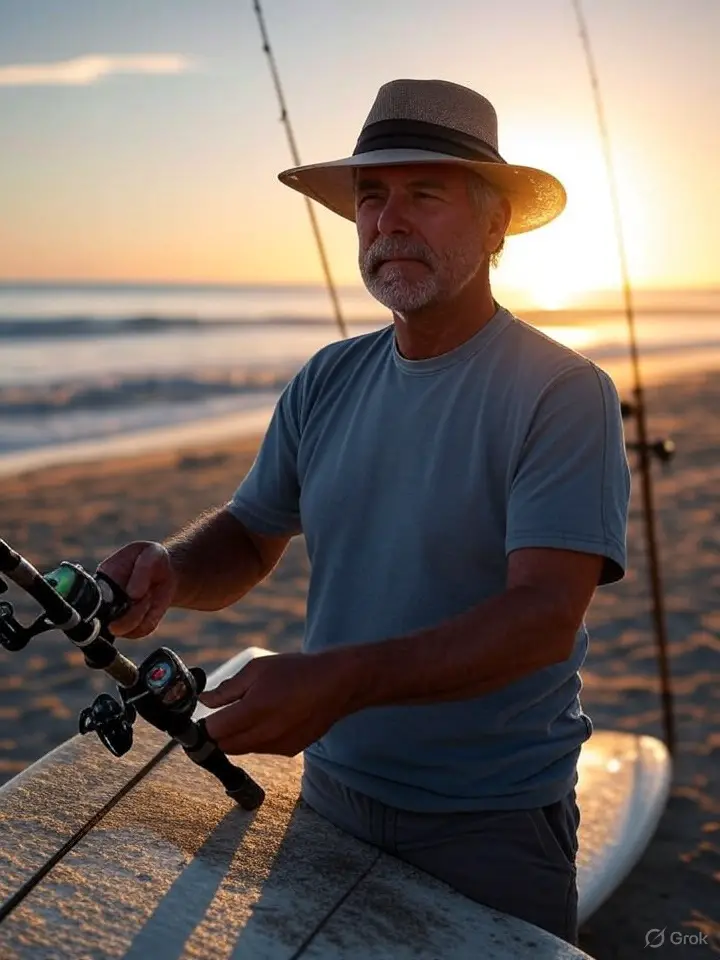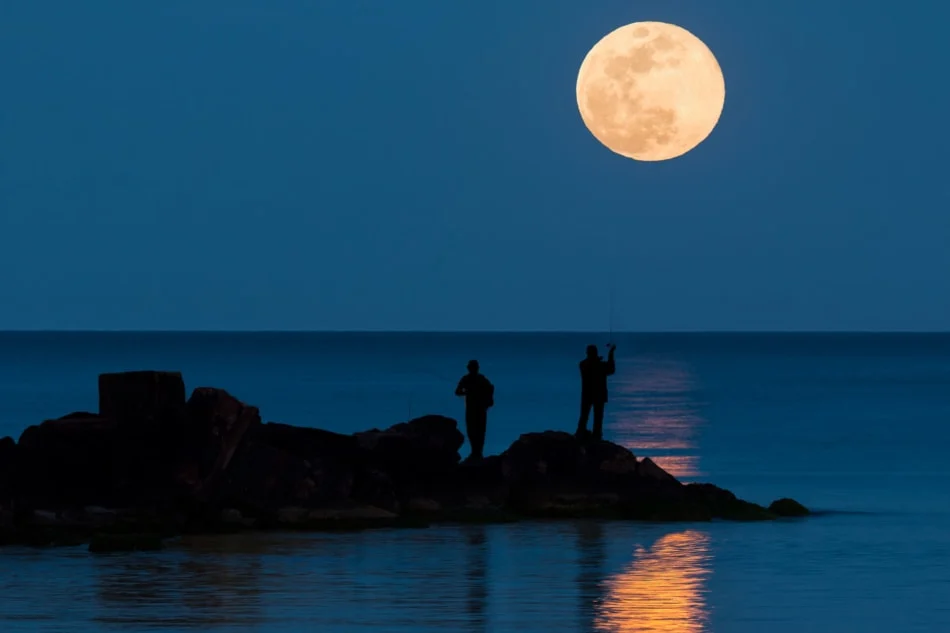The best time to go fishing is typically either early morning or late evening when food is abundant and fish naturally feed within an hour of sunrise and an hour after sunset are the times when fish are likely to bite the most but the rules change according to seasons for some species of fish is much better at night than during the day. When is the Best Time to Go Fishing?
- The best time to go fishing is either early morning or late evening when all fish are active
- Within an hour of sunrise
- Within an hour after sunset
- Between a new Moon and a Full Moon
- Two to four hours just before a front arrives
- During cloudy weather conditions
- When the wind is down
- When the water is calm
Most fish species are just like humans when it comes to eating or moving during times of extreme temperatures. When the window of fishing opportunity becomes smaller, you gotta think like a fish.
When is the Best Time to Go Fishing?
The best time to go fishing is typically either early morning or late evening when food is plentiful and fish naturally feed. Within an hour of sunrise and an hour after sunset are the times when fish are likely to bite the most. Fishing for some kinds of fish is much better at night than during the day.
Fishing during a full moon night can be very productive because there is enough light for fish to feed on the surface. Predatory fish will eat at night if they have enough light to hunt and see prey. On the other hand, many bottom-dwelling fish like catfish, carp, and some sharks are nocturnal.
Fishing is said to be best during the time between a new Moon and a full Moon. This is what the Almanac’s Best Fishing Days are based on. But since all serious fishermen are weather watchers anyway, it makes sense to try and time trips just before a warm or cold front is expected. As a general rule, the two to four hours just before a front arrives is the prime time for fishing.

Fish tend to be more active during cloudy weather conditions rather than on a sunny day. Fish will more freely disperse in the water as opposed to aggregating in one spot. The heavy clouds prevent light from intensely shining through the water.
The wind is typically down when the night arrives, making it much easier to cast and hit spots when you are casting on the water. One of the most obvious disadvantages of fishing at night is the lack of light where you can spot fish swimming near the surface of the water.
The best time to fish is before the storm hits. The fish can sense the change in barometric pressure, and they do their best to gorge on as much food as possible. The reason for this is that during a rainstorm, most fish hunker down and weather out the storm.
What Time Are Fish Most Active
Fish just about everywhere are almost always active at sunrise and sunset. These periods of changing light levels trigger feeding behavior in all species of predatory fish becoming windows of activities for good solid fishing. In general, fishing during the night is most productive between 8:00 p.m. and 3:00 a.m.
Clear and calm nights are the best time to plan your trip, as opposed to when it’s windy and the waters are rough. In clear, calm waters, fish usually become active once the sun has completely set. Fish have no eyelids to protect their eyes so they move deeper towards midday.
In conclusion, fishing is a popular and enjoyable outdoor activity that offers opportunities for relaxation, recreation, and connection with nature. By understanding the factors that influence fish behavior, choosing the right equipment and bait, and practicing proper fishing techniques, anglers can increase their chances of a successful and fulfilling fishing experience. Remember to always follow local regulations and guidelines, respect the environment, and prioritize safety while fishing. Whether you’re a beginner or an experienced angler, there’s always something new to learn and explore in the world of fishing. So grab your gear, head to your favorite fishing spot, and enjoy the thrill of the catch!
When is The Worst Time to Go Fishing?
- If it’s too hot fish don’t eat or move.
- If it’s too cold fish don’t eat or move.
- Rising pressure shuts fish off
- During a rainstorm, most fish hunker down
- The Worst time of the day to go fishing is usually around midday & in the early morning hours (1 am. – 5 am.) ………………………………read more

References:
FAQ’s
